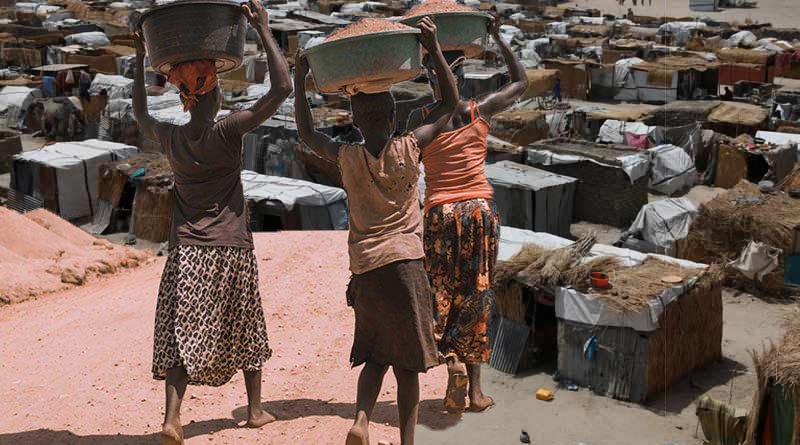In sub-Saharan Africa, 44 million people are displaced, up from 38.3 million at the end of 2021, according to UNHCR planning estimates for 2023.

More Africans are being forcibly displaced than ever before across many regions of Africa as a result of conflict, political violence, climate change, and food insecurity.
According to a recent report by the Institute of Security Studies (ISS), the number of people who were forcibly displaced—including those who were internally displaced, asylum seekers, and refugees—exceeded 100 million globally in May 2022.
In sub-Saharan Africa, 44 million people are displaced, up from 38.3 million at the end of 2021, according to UNHCR planning estimates for 2023. By the end of 2021, 19.2 million people would have left their homes in East Africa, particularly in the Great Lakes and Horn of Africa regions, as a result of armed conflict, drought, and flood-related climate change.
In addition, the area is currently experiencing its worst drought in more than four decades, with a sixth rainy season predicted for 2023. Drought had rendered 1.8 million people homeless by November 2022.
In Ethiopia, Kenya, and Somalia, over nine million animals have perished as a result of four failed rainy seasons and historically low crop yields. Many people seeking refuge from food insecurity turn to other drought-affected areas.
Meanwhile, South Sudan experienced significant flooding for the fourth year in a row. Due to flooding and ongoing conflict, more than two million people have been displaced. According to the report, 10.1 million people in Southern Africa are internally displaced as a result of climate-related disasters, drought, economic pressures, and insecurity.
Five million internally displaced people (IDPs) and one million refugees have been affected by the protracted conflict in the Democratic Republic of the Congo (DRC). Due to extreme poverty and weather, Malawi has a severe food shortage.
In Mozambique, the ongoing insurgency and disasters brought on by climate change have resulted in nearly one million internal displacements. 12.7 million people have been displaced in West and Central Africa as a result of violent extremism, political unrest, intercommunal fighting over limited resources, and climate change.
In addition to flooding in parts of Chad, Niger, Burkina Faso, Mali, and Cameroon, the worst flooding in Nigerian history caused the displacement of 1.3 million people and submerged internal displacement camps.
There is an unprecedented lack of funding for humanitarian and refugee responses, despite this heartbreaking picture across much of Africa. High Commissioner for the UNHCR Filippo Grandi raised the alarm in October 2022, saying, “I regret to inform you that, for the first time during my tenure, I am concerned about UNHCR’s financial situation.”
“The international response to the Ukrainian crisis demonstrates that cooperation and original thinking are possible. It establishes expectations for how all parties, including aid organisations, donors from the public and private sectors, and the media, should respond to Africa’s intricate humanitarian crises. Increased visibility is required, along with actions that offer African refugees long-term solutions,” “the ISS declared.
